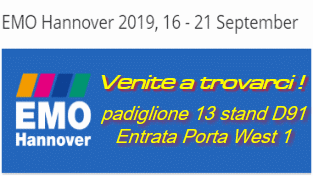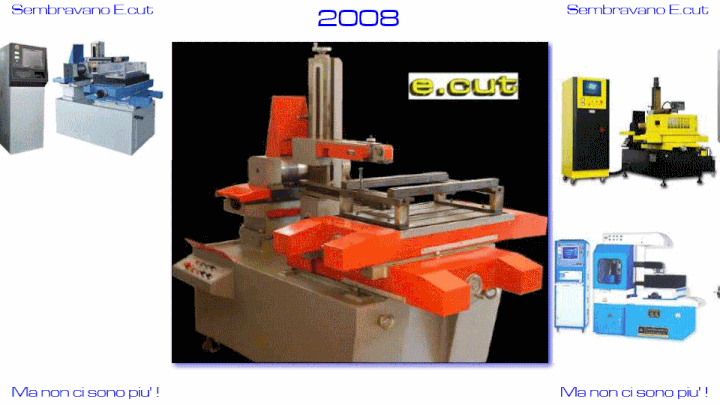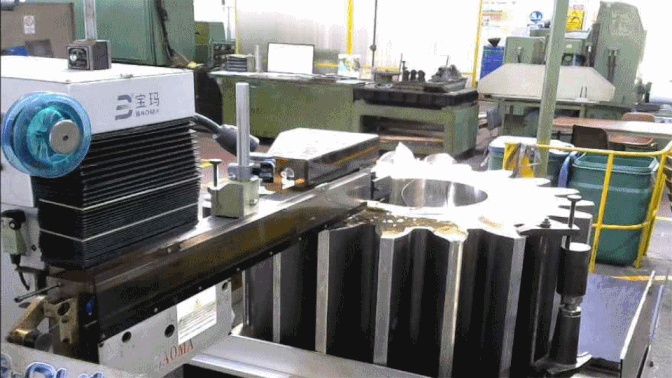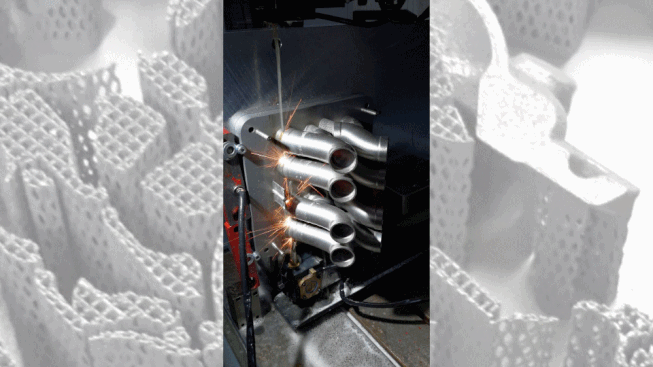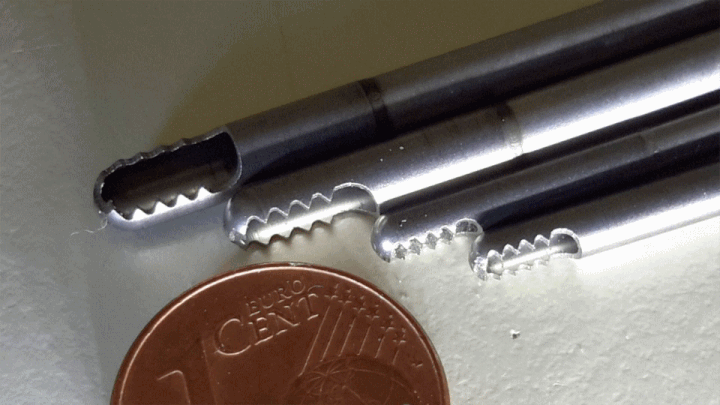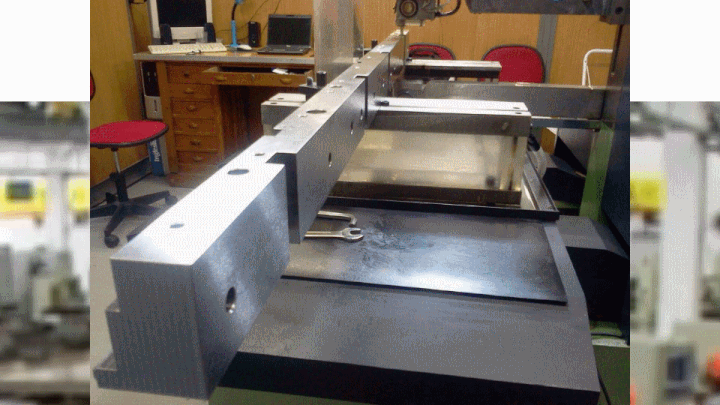With Ecut, yes!
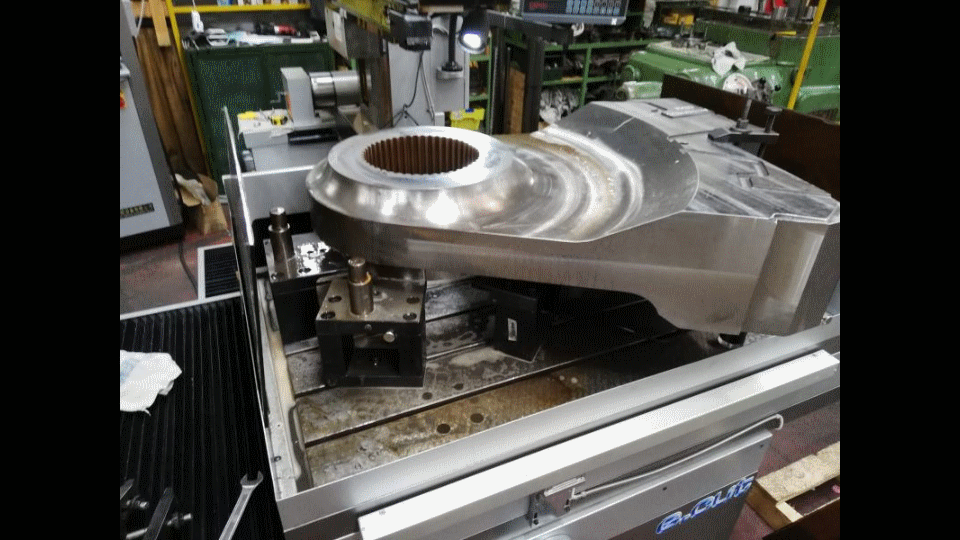
Large dimensions
On this large workpiece (over 2500 Kg.) and a cantilevered part of over 1000 mm, the internal toothing must be carried out. The execution by a third party, in addition to the considerable cost required by those who have a suitable hobbing machine, collided with the delivery time. The alternative could have been wire erosion, but even so the hourly costs of such a machine are prohibitive, not to mention delivery times.
Machining with an Ecut 63D has cost incredibly less than wire erosion, and even less than the hobbing machine.
The absence of the immersion tank allows the positioning of pieces with dimensions even far exceeding the table. The span between the heads of 500 mm, (optional up to 800 mm), allows you to place and cut pieces of high thickness.
The precision achievable, within 0,015 mm, ( +/- o,oo75 mm ), with roughness even lower than 1 Ra; the perfect geometry of the machined parts, without any barrel effect even at high thicknesses and with high removal speed, makes Ecut more and more widespread in gear manufacturing companies.
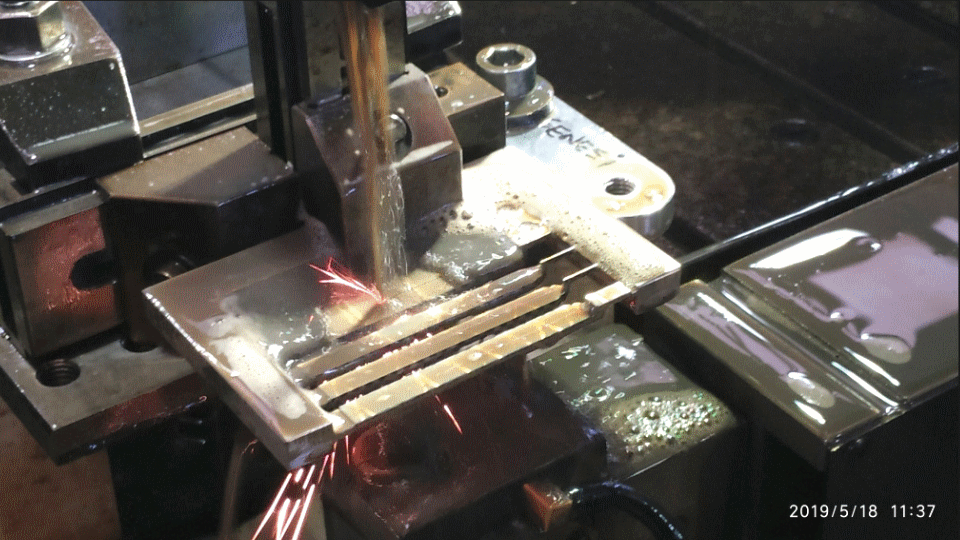
Aeronautics – Gas&Oil – Medical – Automotive racing
The use of increasingly sophisticated metal materials is increasingly widespread in high-tech sectors. More and more complex shapes for light and very resistant pieces are designed considering the great possibilities of multi-axis machine tools.
However, there are some problems:
The materials are often hard or bonded, so they are very difficult to remove from the tool.
More and more sophisticated machines are expensive, and… delicate.
Wire erosion is one of the methods to remove as much material as possible, and leave a minimum amount of chips to finish.
But wire erosion costs money!
E.cut™, has some great advantages over conventional erosion:
1) A 10 to 20 times lower operating cost.
2) The lack of a tank in which pieces and clamping tools have to be placed. This implies the possibility of working in a pendulum, loading one piece while the other is cutting, or the adoption of rotary tables, or dividers ….
3) Large cutting thicknesses even for the smallest (and least expensive) machines, with the possibility to cut more overlapping pieces and reduce the time of loading and unloading pieces.
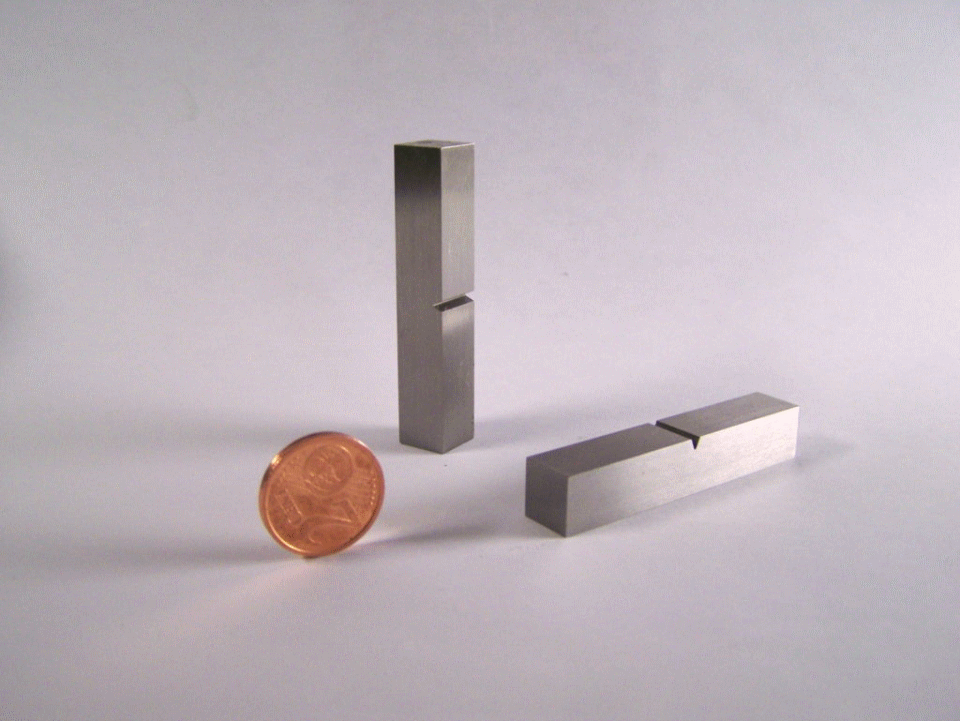
.
Specimens of materials resistance
Providing certification of used materials is becoming increasingly important. For each casting, for each forged, for each semi-finished product from which a piece is obtained, it is increasingly necessary to provide the results of tensile tests, resilience, etc..
But the samples must be obtained!
Sawing, cutting, milling, turning… and at the end maybe the material has been “stressed”, and the test is no longer conclusive.
The cost then splashes, especially if it is difficult materials, (titanium, inconel, stainless steel, etc..).
Ecut™ is the ideal solution.
At an incredibly low cost you get the finished or semi-finished specimens, with centesimal precision, without stressing the material, and starting from any blank, casting, plate, laminate or forged.
The extreme simplicity of the Ecut™ control system and the possibility of archiving an infinite number of programs for each size or material give the possibility to employ poorly qualified personnel.
